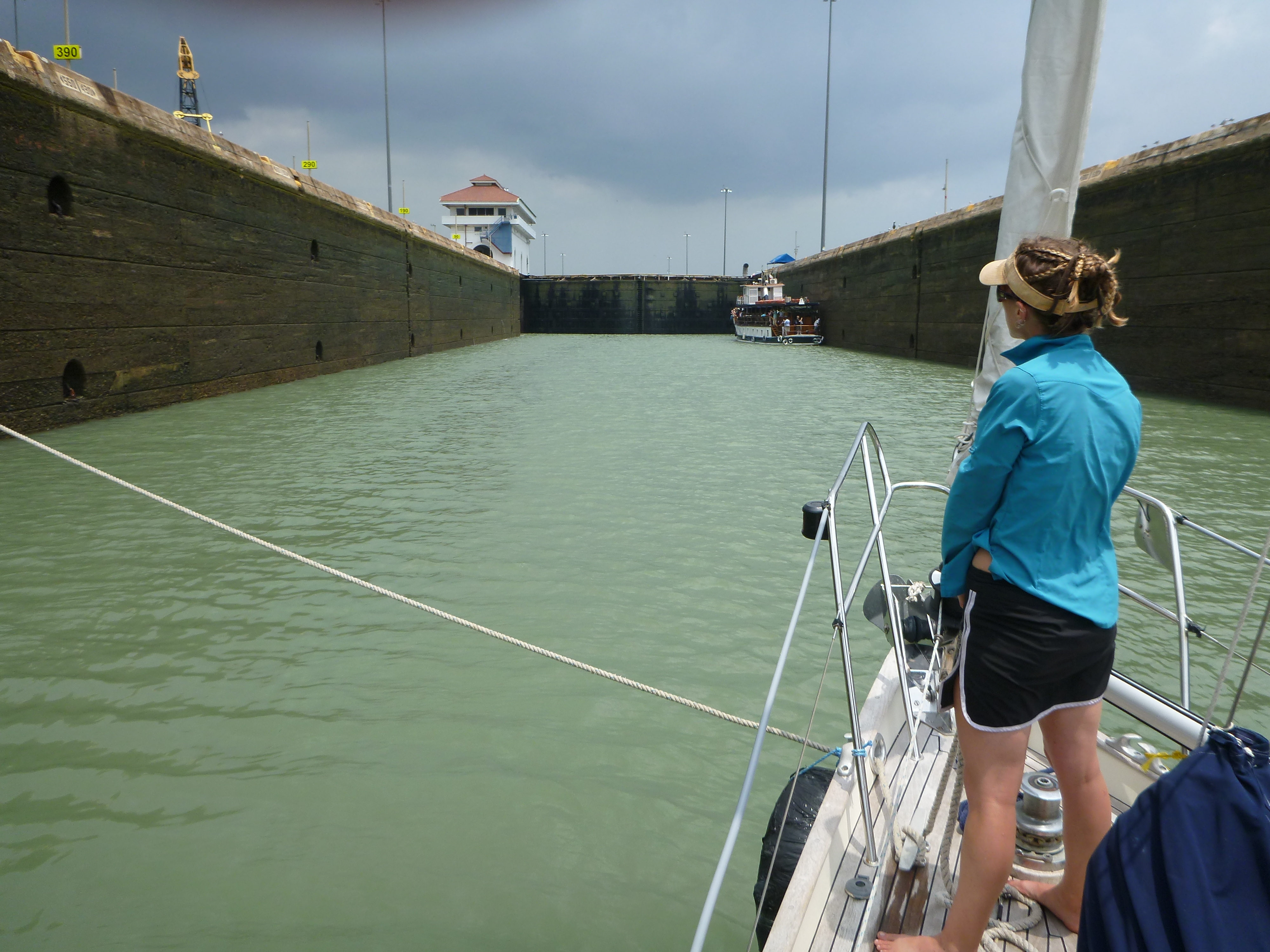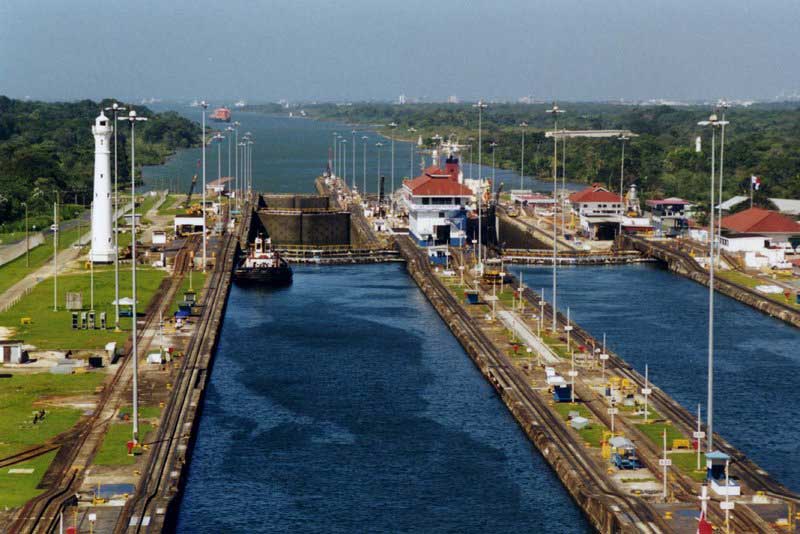The Monkey’s Fist (in your face)
We did it! Our first Panama Canal transit was a success. And by success, I mean none of the scary things happened that most yacht owners worry about. Those scary things include:
- Hitting one of the concrete walls in the 106-foot wide locks and damaging your sailboat as billions of gallons of incoming freshwater boil and roil around you, creating unpredictable eddies and turbulence.
- Running into a 950-foot-long container ship steaming past you at 15 knots in a narrow channel.
- Taking a bow wave on the beam or getting sucked into the wake of a passing freighter.
- Tearing off a cleat or another important sailboat part while tied tightly to 2 other very expensive sailboats as they all motor along together in a giant, slow-moving, un-agile clump (making the perfect target for the speedy mega-ton container ships passing by).
- Getting a monkey’s fist to the face.
Obviously, #5 is the most terrifying of the potential Canal dangers. It’s also the most likely to occur. Although none of the above events came to pass (knock on lots of wood) during our transit, all of them were a distinct possibility at certain points. With common sense, a pilot who can see really large ships, and basic laws of physics, most of these factors can be controlled.
But you can’t control the monkey’s fist.
This deadly ball of flying lead-loaded death is unassuming. It’s a miniscule object, compared to the other multi-ton objects that could cause disaster in the Panama Canal. But it could take you out. Or your solar panel. Definitely a window, and probably your eye.
What in the hell, you ask, is a monkey’s fist? As you’ve likely guessed, it’s not the hand of the mammal that swings from trees, but rather the name of a fancy knot. In the case of a Canal transit, it happens to be a fancy knot wrapped over pieces of lead, which is tossed at your boat from a nonchalant, cigarette-smoking Panamanian line-handler standing 50+ feet above your boat on the walls of the lock.
The monkey’s fist is attached to a long, thin, gnarled, algae-covered rope perfectly sized to give you a rope burn. The reasons the Panamanians throw them at your boat (besides the entertainment value associated with watching foreigners run and duck) is so that you can tie it to a longer, thicker, sturdier rope (called “lines” on a boat, remember) designed to keep your boat well away from the nasty boat-crunching concrete walls of the lock. The nonchalant line-handler pulls both the thin and thick ropes back up (eventually), and hooks it to a bollard (also known as a really big peg) on the top of the lock.
As the line handlers on Maunie, a lovely 38-foot Vancouver owned by a lovely British couple named Graham and Dianne, Rob and I were in charge of, first, avoiding the monkey’s fist, and, second, running quickly to grab it from where it thumped down. After tying on our dock line and securing the other end to the sailboat, we then spent the 10-15 minutes in each lock pulling in slack or letting out slack, depending on whether that lock was raising or lowering Maunie.
Not rocket science. But remarkably more difficult than one would think when you have 3 sailboats rafted-up together, complete with 3 different skippers, 12 different line handlers, 3 different Canal pilot guides (required to transit the Canal), and assorted children, pets and ferry-boat tourists all giving conflicting orders and advice. It’s kind of hilarious. A little bit stressful. And all around an interesting experience.
Luckily, Rob and I were thrilled to be aboard Maunie for our virgin Canal crossing, as Graham and Dianne are first-class sailors and very calm and patient people. We learned a lot from them, and are all set to help Llyr brave the freighters and concrete walls on Saturday. We’ll show those monkeys’ fists who’s boss again, too … right after we duck and cover, of course.










